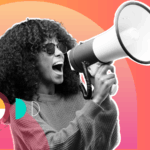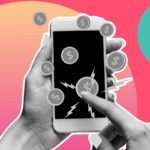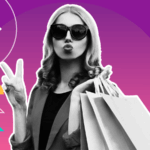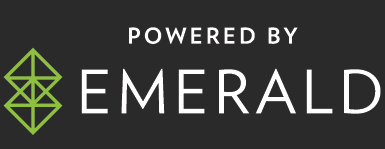By Shauna Cook, Senior Social Media Manager, Live & Breathe
It’s no secret how powerful social media can be for brands.
It’s a marketing team’s dream to have an engaged community on social platforms, and today, TikTok is at the eye of that storm. Every brand wants to be on it, and it’s no wonder – TikTok has over one billion global monthly active users and 150 million in Europe alone. There are so many niche audiences within that cohort that any brand can thrive.
TikTok also has a proven ability to drive sales. According to research, 92% of users take action after watching a video, and 37% have bought something they discovered while on the platform.
It’s a compelling opportunity for brands to tap into. But with so many now waking up to this, TikTok has become completely oversaturated with ads and self-promotional posts. Audiences are getting bored, and even influencers now struggle to get their advertising content to resonate.
People go to social media to connect with other people. Amid all the ads and brand posts, this is getting lost.
So, what can brands do to grab attention and avoid just becoming more noise in an already oversaturated feed? The answer is human-to-human (H2H) marketing.
H2H is about letting audiences know the faces behind the brand. Whereas traditional marketing methods tend to focus on impersonal, mass communication, H2H prioritises personal and meaningful interactions. It recognises that at the heart of every business transaction are humans interacting with other humans, leveraging empathy, transparency, and direct communication to build trust.
And when consumers have so many choices available, trust is how brands win.
Engaging with EGC
Employee-generated content (EGC) is a big part of H2H marketing on TikTok. Whether the founder or staff members, EGC lets internal spokespeople humanise a brand and its content.
And who better to talk about your brand than those who are naturally its biggest advocates? It also tends to be a highly cost-effective way to drive engagement and trust.
Brands can use EGC to share educational messages about their products, or relatable content that makes their audience feel seen and understood. Memes and TikTok trends might seem frivolous, but they can really make your customers feel closer to you as a brand. They make you relatable, and demonstrate that you as a brand think just like them. You understand and have even experienced the same problems and frustrations.
Persuading employees to create EGC can be challenging – it’s not something you sign up for when taking a job, after all. One of the best ways of addressing this is to maintain an ongoing internal education effort about the impact H2H marketing can have. Staff then feel invested in capitalising on the opportunity and are more open to collaborating and sharing ideas.
Fortunately, there are plenty of examples to demonstrate how effectively EGC can drive brand growth. Beauty brand Refy, which was catapulted into the mainstream after achieving virality on TikTok, often posts behind-the-scenes office footage of its employees participating in popular trends. The brand has amassed nearly 250,000 followers and millions of cumulative views.
Outside the fashion and beauty industry, FMCG brand Proper Snacks posts videos following the antics of its interns, and mortgage brokers are even taking to TikTok to share educational advice.
As TikTok becomes increasingly used as a search tool, educational content is set to become even more critical. Brands should make it a priority in their EGC, positioning themselves as personal mentors and guides.
User-generated trust
It’s not all about EGC. UGC (user-generated content) is equally important. Your customers have the potential to become your biggest brand advocates.
TikTok thrives on UGC. People want to share their everyday lives and interests, taking word-of-mouth recommendations to a whole new level. That’s especially true as TikTok becomes a search platform – people will hunt for reviews and opinions on products before they buy.
To turn your audience into genuine brand ambassadors, engage with them daily. Reply to their comments, respond to UGC shared about your brand, and make your audience feel acknowledged. It’s also wise to reward your most loyal customers and followers with offers that incentivise them to create UGC, like discount codes or exclusive access to events.
None of this is to suggest that influencers aren’t still powerful in their own right. It’s about using both to the best effect. Influencers help brands reach new audiences quickly, drive hype, and deliver measurable return on investment (ROI). Ambassadors are about leveraging your existing customer base to build trust and drive conversation en masse.
In short, they work best hand in hand. Your community will reaffirm what influencers are recommending, building more trust for both the influencer and the brand.
Of course, getting buy-in from senior leadership to spend time nurturing your community of ambassadors and creating EGC can be difficult. By and large, businesses want to see quick wins from social media. But H2H marketing isn’t about sales; it’s about building awareness and brand equity to drive commercial value in the long term.
By focusing on authentic human interactions at the core of their strategy, brands can foster meaningful connections and build loyal communities on TikTok. That’s how brands play the social media long game to win.







